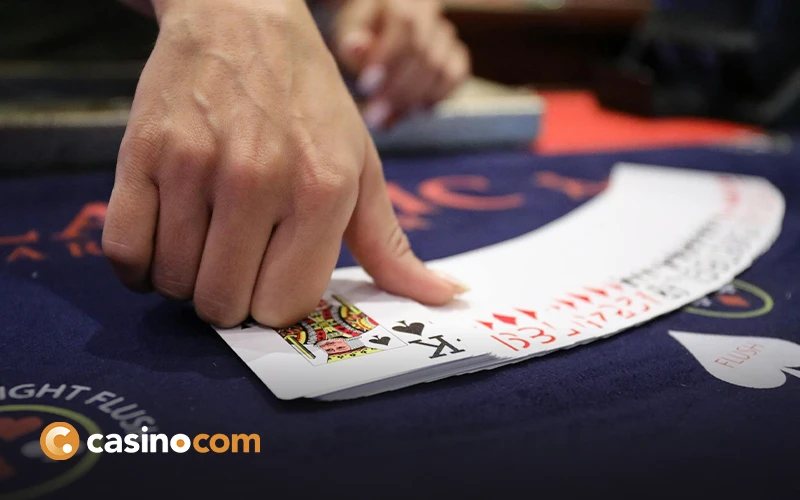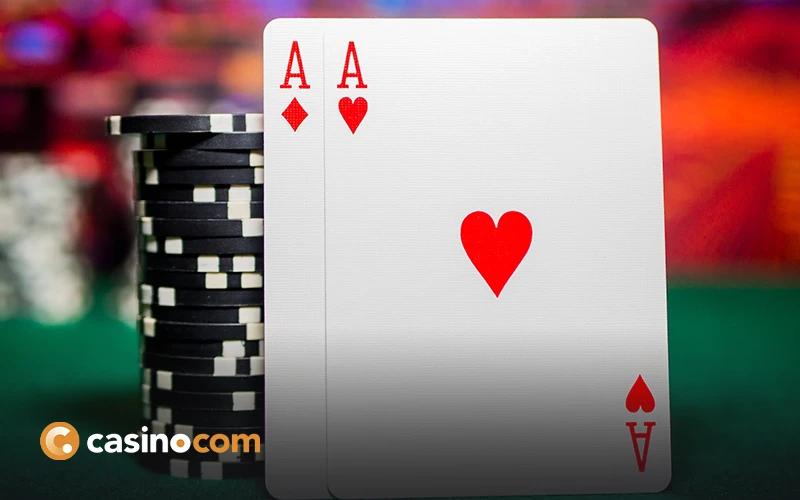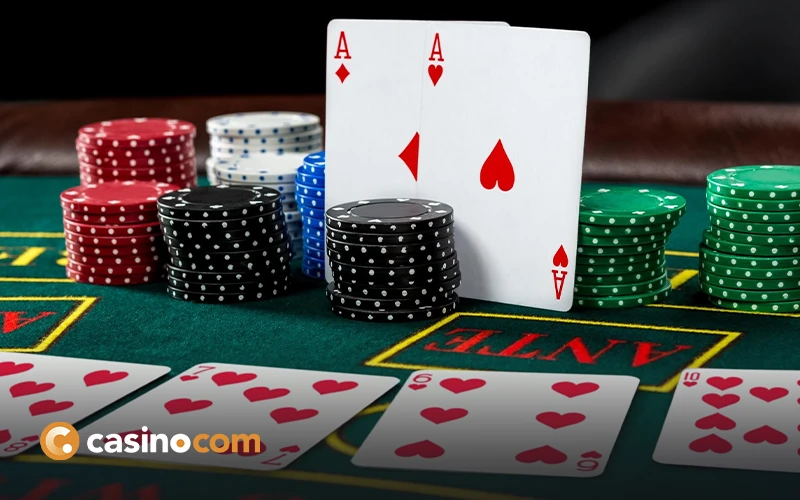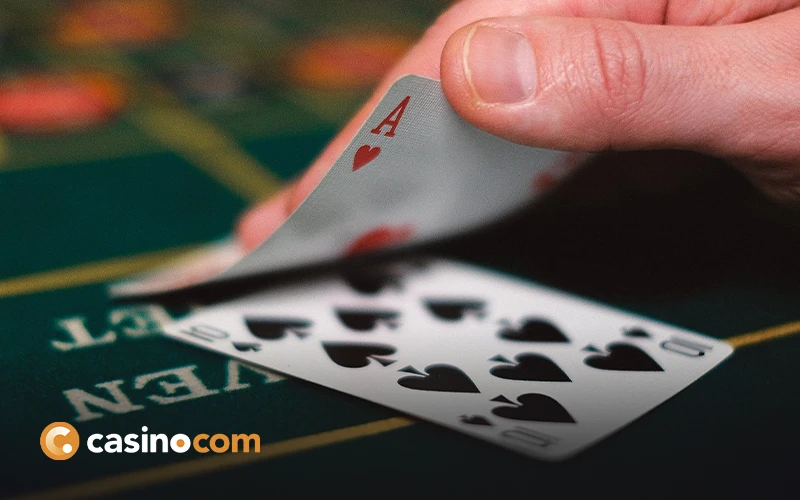At first glance, poker can seem like an intimidating game. Whether it’s the hobby once enjoyed on riverboats (and often concluded with a gunfight) or the high-stakes world of the World Series of Poker, this rapidly evolving casino game has an air of exclusivity about it. After all, if the competitors aren’t playing with bales of money, they’re making the most of mastery of human psychology. How does anyone compete with that?
Well, there is one form of poker which is very easy to learn and which can be mastered in minutes. We are going to introduce you to the rules of 3 card poker, a game to play with friends or for real money at our online casino. Without further ado, let’s find out how to play this pared-down version of the world’s favourite card game.
If you prefer a visual guide, free to check out our 90 second video on how to play 3 Card Poker:
Requirements and Objectives of Three Card Poker
The requirements when playing three card poker can vary depending on what format you choose. For instance, when playing in live casinos, the game is played using a single 52-card deck and betting chips. That said, automatic shuffling machines are in use to keep decks shuffled while one is in play.
When playing online, three card poker is virtually the same, using virtual representations of the cards and chips. Players are able to check their credit meter to see how much they have left for wagering on a particular hand. Some casinos online also have live three card poker featuring a real dealer rather than virtual cards.
In order to win a hand of three card poker, the concept is simple: make the best three-card poker hand possible. There are no draws or exchanges as there would be in games like Blackjack. You work with the cards you are dealt and nothing more. Think of it as a shorter version of classic games like “stud.”
In the average game of three card poker, you want to either have a pair or better in order to win. Some of it comes down to how you bet, but you simply need to best the hand shown by the dealer in order to win.
Three Card Poker Rules
First of all, forget everything you know about Texas Hold’em, Omaha Hi-Lo, and the many other variants of standard poker. 3-card poker is a simple comparison game not unlike blackjack and baccarat. Put another way, it’s a face-off between player and dealer over who has the better hand, albeit with a few twists and turns along the way. Most people will pick up the basics within five minutes.
Like blackjack, the action begins with a bet. This can take several forms, as we’ll discuss in the next section. However, at this stage, your choice will be an ante bet (your hand is better than the dealer’s), a pair plus bet (you have a pair or better), or both. The croupier will then give the player and themselves three cards, dealt face-down. Now, it’s time to decide whether you want to play or fold.
As a quick primer, let’s go over the hand rankings in 3-card poker so that you know when it’s best to play or give up. From most to least valuable –
-
- Mini Royal Flush: A, K, Q, same suit, usually spades*
-
- Straight Flush: Three cards in sequence, same suit.
-
- Three of a Kind: Three cards of the same number, any suit.
-
- Straight: Three cards in sequence, any suit.
-
- Flush: Three cards, same suit.
-
- Pair: two cards of the same number, any suit.
-
- High card: anything else, identified by the highest value card, e.g. 9-high, ace-high.
*Games with progressive jackpots only.
Note that each of the cards has an individual value, too. This is to ensure that there’s a winner in scenarios where both the player and the dealer have a flush (for example) or both have a high card hand. These are, from most to least valuable: A, K, Q, J, 10, 9, 8, 7, 6, 5, 4, 3, and 2. In 3-card poker, all suits have the same values, so a 7 of clubs is worth the same as a 7 of hearts, and so forth.
A high card versus high card scenario is the most likely outcome for most 3-card poker rounds, occurring about 75% of the time.
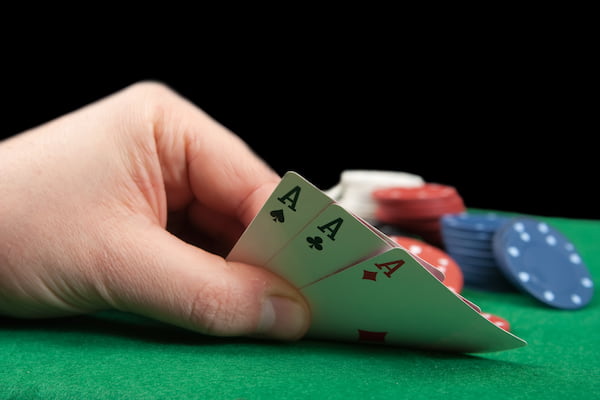
Returning to the action – if you’ve made the decision to continue, you must place a play bet, which is the same size as the ante bet that you’ve already placed on the table. Alternatively, if you decided to fold, your ante and pair plus bets will be taken by the dealer. You may be wondering why you would ever fold if you immediately lose your bet. It’s so you don’t have to waste a play wager on a losing hand.
Experts recommend that players only play with a hand better than Q, 6, 4, otherwise known as queen-high. In any case, once a play bet has been made, all cards are turned over and the best hand wins. There are a few quirks of the game that come into play here. These are, a) that a dealer hand of jack-high means the player’s ante is given back, and b) a dealer hand of queen-high returns both the ante and play wagers if the player wins.
That’s basically it for 3-card poker. So, to summarise –
-
- Make an ante-bet and/or a pair plus bet.
-
- All cards are dealt, face-down.
-
- Decide whether to play or fold.
-
- Make a play bet.
-
- All cards are turned over.
Types of Bets in 3-Card Poker
As we’ve already discussed, 3-card poker involves an interaction between the ante bet, pair plus bet, and the play bet. Unfortunately, at most tables found online, there’s very little else available in terms of legal wagers. There are many bets exclusive to individual casinos, countries, and game variants, though, which can add a bit more complexity to the standard gameplay.
Let’s start with the ante bonus, which isn’t so much a bet as a reward for a certain outcome. If a player places both an ante bet and a play bet, an ante bonus will be given if they receive a Straight, Three of a Kind, or Straight Flush. This bonus can be paid out even if the dealer has a better hand than the player. Be aware that the ante bonus isn’t always in play. It also has odds of about 1 in 27.
Two more options are the prime bet, which is an alternative to the pair plus and pays out when the player has three cards of the same colour, and the six-card bonus wager. This rare option involves making the best five-card hand possible from both your and the dealer’s hand. In essence, you’re trying to make a standard poker hand in 3-card poker. The hand rankings for the bonus wager are:
-
- Royal Flush: A, J, Q, K, A, same suit.
-
- Straight Flush: five cards in sequence, same suit.
-
- Four of a Kind: Four cards of the same number, any suit.
-
- Full House: three of a kind plus a pair, any suit.
-
- Flush: five cards, same suit.
-
- Straight: five cards in sequence, any suit.
-
- Three of a Kind: three cards of the same number, any suit.
As 3-card poker is designed to be a pick-up and play version of the original game, the number of bets that can be placed is limited.
Payouts and Odds
Before we get stuck into this section, it’s worth mentioning the fact that 3-card poker is subject to the house edge, the advantage that the casino has in all games played under its roof. This flying start stems from the fact that players have a chance of losing before the dealer has even made a decision, as they can fold, ending the game and surrendering their ante bet.
The house edge in 3-card poker is 3.37% but it can be reduced to as low as 2.01% with an optimal hand, that is, anything better than Q, 6, 4. There’s no way to force this scenario other than getting lucky on the deal so many of your opportunities for strategy will revolve around knowing when to play or fold. In any case, there’s still plenty more to learn about 3-card poker so let’s move on to odds and payouts.
-
- Player win: 44.91%
-
- Dealer win: 55.03%
-
- Tie: 0.06%
All payouts are 1:1 in 3-card poker, which makes special bets all the more valuable. Now, the odds for each possible bet or side bet, namely, pair plus, ante bonus, and the six-card bonus:
| Bet | Hand | Payout |
| Pair Plus | Straight Flush | 40:1 |
| Three of a Kind | 30:1 | |
| Straight | 6:1 | |
| Flush | 3:1 | |
| Pair | 1:1 | |
| Ante Bonus | Straight Flush | 5:1 |
| Three of a Kind | 4:1 | |
| Straight | 1:1 | |
| Six-card Bonus | Royal Flush | 1,000:1 |
| Straight Flush | 200:1 | |
| Four of a Kind | 100:1 | |
| Full House | 20:1 | |
| Flush | 15:1 | |
| Straight | 9:1 | |
| Three of a Kind | 8:1 |
Finally, as we touched upon earlier, most 3-card poker games will be contested between two high card hands. The likelihood of every other hand occurring is –
-
- Straight Flush (0.21%)
-
- Three of a Kind (0.23%)
-
- Straight (3.2%)
-
- Flush (4.9%)
-
- Pair (16.9%)
Conclusion
3-card poker is a game designed for simplicity that also offers a surprising amount of depth to experienced players. It provides an easy route into standard poker and/or an escape from the intensity of Texas Hold’em and the many other variants of this classic card game. The various hands and possible wagers do take some getting used to but even the game’s more advanced mechanics can be mastered in just a few short hours.
For players looking to explore the game further, progressive 3-card poker games usually have much larger jackpots than regular tables do and offer an additional bonus – envy. This requires a hand of A, K, or Q, but it’s only paid out to players who do not have this hand – hence the name – and never on the dealer’s hand. On the downside, progressive 3-card poker tends to be a land-based variant, with prize pots created from the players’ own funds.
We hope you’ve enjoyed reading this introduction to 3-card poker. Browse our site for more exclusive guides to your favourite casino games, including blackjack etiquette and betting systems, the history of baccarat, and all the secrets of the Ancient Chinese game Sic Bo.

Previous: Caribbean Poker Tips
Next: 3 Card Poker Tips

